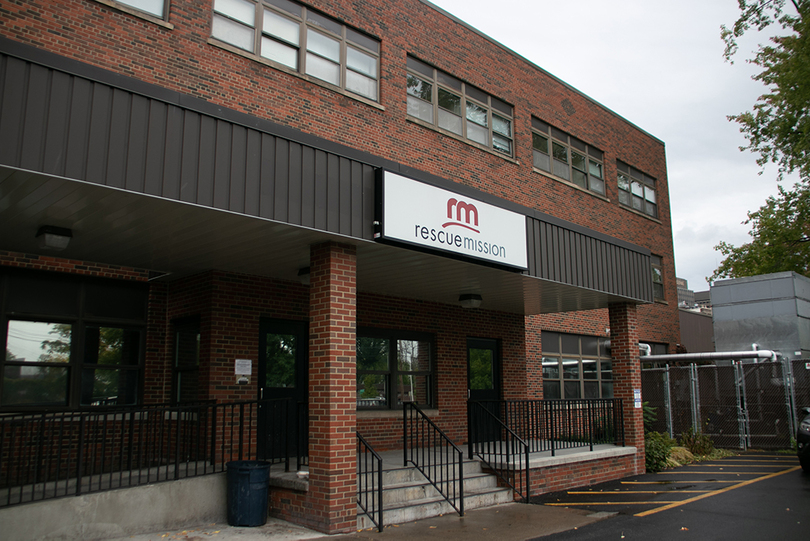Syracuse nonprofit will build city’s 1st LGBTQ youth homeless shelter

The shelter’s ultimate goal is to place children in the care of a supportive family member or safely reunite them with their family. Elizabeth Billman | Senior Staff Photographer
In 2015, Deb Coolhart asked LGBTQ youth in Syracuse what resources their community lacked. She received an overwhelmingly consistent answer: a shelter specifically for homeless LGBTQ people.
In response, Syracuse’s chapter of Rescue Mission Alliance is now working to establish the city’s first shelter devoted to supporting LGBTQ youth who have run away from home.
The shelter will work with ACR Health — another nonprofit organization that provides sexual health services to youth and adults — to provide temporary, emergency housing for youth between the ages of 12 and 17. The shelter’s ultimate goal will be to place children in the care of a supportive family member or safely reunite them with their family, said Tori Shires, chief development officer at the Rescue Mission.
“The idea (of the shelter) is to be an affirming and welcoming space,” Shires said. “Either way, we want to make sure the child is going back to a family member who loves and accepts them for who they are.”
Rescue Mission Alliance saw the need for this shelter after Coolhart, who is a Syracuse University professor, co-authored a study in 2015 that explored the experiences and unmet needs of homeless LGBTQ youth in the city of Syracuse, Shires said.
While the shelter offers housing for any young person, it will strive to create a supportive and caring space for LGBTQ youth, Shires said. According to Coolhart’s survey, LGBTQ youth in the city face homelessness at a significantly higher rate than non-LGBTQ youth.
Many LGBTQ youth who enter shelters face discrimination from people who work in the shelters as well as peers who are staying there, Coolhart said. Some shelter workers may use their religious affiliations as a justification to discriminate against LGBTQ youth, she said.
“What we found is that there are a number of likely LGBTQ youth or other youth who don’t feel comfortable going to the current shelter, and so they might be couch surfing or staying with friends,” Shires said. “They’re considered ‘the invisible homeless’ because there’s no way for us to count them.”

Sarah Miles | Design Editor
One participant in Coolhart’s study who had been kicked out of their home for being gay told Coolhart that an employee at a shelter said they agreed with their parents’ decision to kick them out. Another described a shelter worker who refused to use their real name and pronouns, she said.
Many homeless youth who didn’t feel safe staying in shelters told Coolhart they would break into abandoned houses to sleep, or would have to engage in sex work to survive, she said.
“Homeless youth need a safe place to go, and if they don’t feel safe, they’re going to the street,” Coolhart said.
Rescue Mission Alliance already secured a location for the shelter and is renovating it “top to bottom,” Shires said. While construction on the shelter stopped due to the coronavirus pandemic, it restarted again at the end of this summer, she said.
The shelter is still undergoing the state and county’s approval and certification process, Shires said. It also must secure funding and hire a 24-hour staff before opening, she said.
The house has 10 bedrooms with one bed each. While the shelter will ideally keep one child to a room, they may add more beds if the need arises, Shires said. The goal is to fill all the beds and ensure no child is out on the street, she said.
Shires predicts that an individual will likely stay at the shelter for one week to 30 days on average until they are reunited with a safe and supportive family member.
The children will mainly come to the shelter through referrals, Shires said. The Rescue Mission will work with counselors to find homeless youth who are seeking shelter.
The Rescue Mission’s current shelter in the city, which serves adults 18 or older, is forced to turn youth away, according to a press release on the shelter’s website.
In the Syracuse City School District, 6% of students enrolled in the 2017-18 academic year were homeless under the McKinney-Vento Homeless Assistance Act, which defines homeless youth as children who lack a stable home or a permanent address.
Shires said the shelter will also follow the guidelines of the McKinney-Vento Act, which states that all homeless children must be enrolled in school and provided with necessary resources, such as school supplies, free lunch and transportation.
“No one should feel like they don’t have a safe place to go, or a safe place where they can be themselves,” Shires said.




